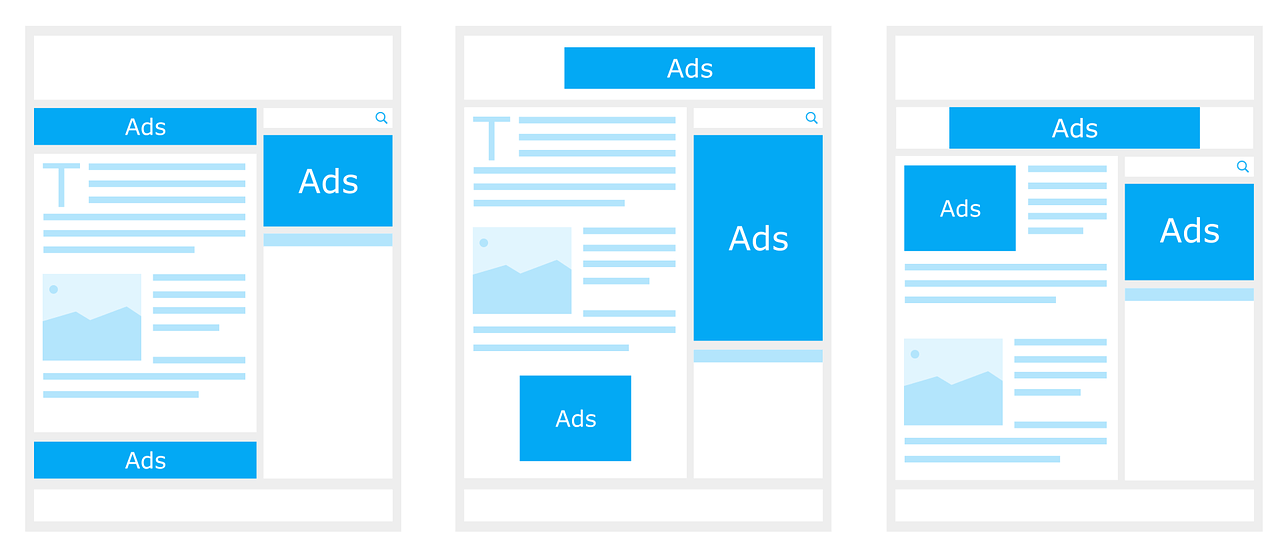7 things to keep in mind to build a great banner ad

Are you looking to boost your online traffic? A great way to do this is banner advertising and looking at the message your banner is telling. With the daily static noise around us you may find yourself asking: what do I need to do to create a web banner ad that people will want to click on? There are some basic design guidelines to keep in mind when creating effective banner ads. But first, it’s good to have a base understanding of what banner design is.
Web banner design is among the top 10 forms of marketing used in today’s online world and can come in all shapes and sizes. With the ability to target individuals based on demographics, interests, geographic locations, etc., you can deliver display ads to websites your client visits. Web banner design is all about creating an eye-catching message that gathers the most clicks. It’s all about driving traffic!
Using banner ads can be an affordable approach, as well as a measurable and effective way to market an advertisers brand or product! They are a visual way of introducing a brand to an individual and pulling them in with an intriguing message or offer! So, what do I need to do to create a web banner ad that people will want to click on? It has been found that if you include these seven key things, you will have the tools needed for an effective display campaign.
1.) Start by using the most effective standard
banner sizes. According to Google AdSense, the most successful standard banners
are:
a.728x90px - Leaderboard
b.300x600px - Half Page
c.300x250px - Medium Rectangle
d.336x280px - Large Rectangle
Build out multiple banner sizes, to reach
users on multiple devices and sites.
2.) Keep your message simple. Have you heard of the
KISS principle? The K.I.S.S principle is an acronym for “Keep it simple,
Silly.” Fun fact, this is a design principle that was noted by the U.S. Navy in
the 1960s, stating that most systems work best if they are kept simple rather
than made complicated. So, when in doubt leave it out!
3.)Along with keeping it simple, remember to maintain hierarchy. There are three basic elements to include in your banner ad, first of which is your company logo. Second, you need the value - this is the message you want users to receive. If you have an attractive offer, include it! And last but not least, include a call to action. This is typically in the form of text or a button that invites a user to click on the ad. Examples include “Learn More” “Get Started” or “Order Now."
4.)Ensure your text is readable. When building out
banner ads the best practice is to keep text to around 10-12 words max. You
only have seconds to grab a user’s attention. The more they have to read the
more likely it’s not going to grab their attention. When it comes to the font,
leave out thinly weighted cursive/script fonts and keep your text size no
smaller than 10 pt font (unless there’s a disclaimer or copyright notice).
5.)Be consistent with your branding. Keep in mind the
banner ads you are building are linking through to your landing page. Make sure
each carry out the same branding to ensure users they are linking through to
the right website.
6.)Did you know color speaks its own language that
words can’t replicate? Color influences our daily choices and emotions. Knowing
the audience you want to target and picking the right color to target that
audience can be effective. Here are a list of a few emotions and moods that colors
give off.
a.Red – Ambition, energy, confidence, bold,
passionate
b.Pink – Sensitive, intuitive, love, care, respect
c.Orange – Freedom, social, warmth, motivation,
impulse, friendly
d.Yellow – Optimism, energetic, fun, logical, attentive
e.Green – Growth, nature, equilibrium, rebirth,
wealth, positivity, stable
f.Navy – Responsible, integrity, trust,
peace, order
g.Blue – Ambition, perspective, aware, open
h.Purple – Fantasy, creativity, distinguished,
modesty, deep, luxury
i.Black – Strength, power, professional, accuracy
j.Grey – Balance, neutral, timeless, practical,
solid
k.Brown – Honest, simplicity, warmth
l.White – Simplicity, purity, neutral, clean,
minimalism
Colors and fonts combined together can be a valuable tool to influence users. Choose colors that complement each other and don’t conflict. According to a survey done by Small Business Trends , 93% of buyers said they focus on visual appearance, and close to 85% claim color is the primary reason they make a purchase!
7.)Optimize size and format. Keeping your file size as small as possible is ideal. You want your ad to load fast on a page before viewers scroll down and miss your message. You also want to build them out in the most common ad formats to ensure your ad can run anywhere: JPEG, GIF, PNG or HTML5.
Bonus tip: During these challenging times of uncertainty it can be easy to pull your advertising campaigns. We’ve never been in this situation before so there are many unknowns. If you can keep your advertising running, do so but switch your message to a heart beat campaign. This can be a simple campaign that is heartwarming, encouraging and gives a sense of comfort by letting users know you’re open and that you are here for them now and will be once we return to a sense of normal. If you’re not open, this can be a great opportunity to keep your brand front and center.










